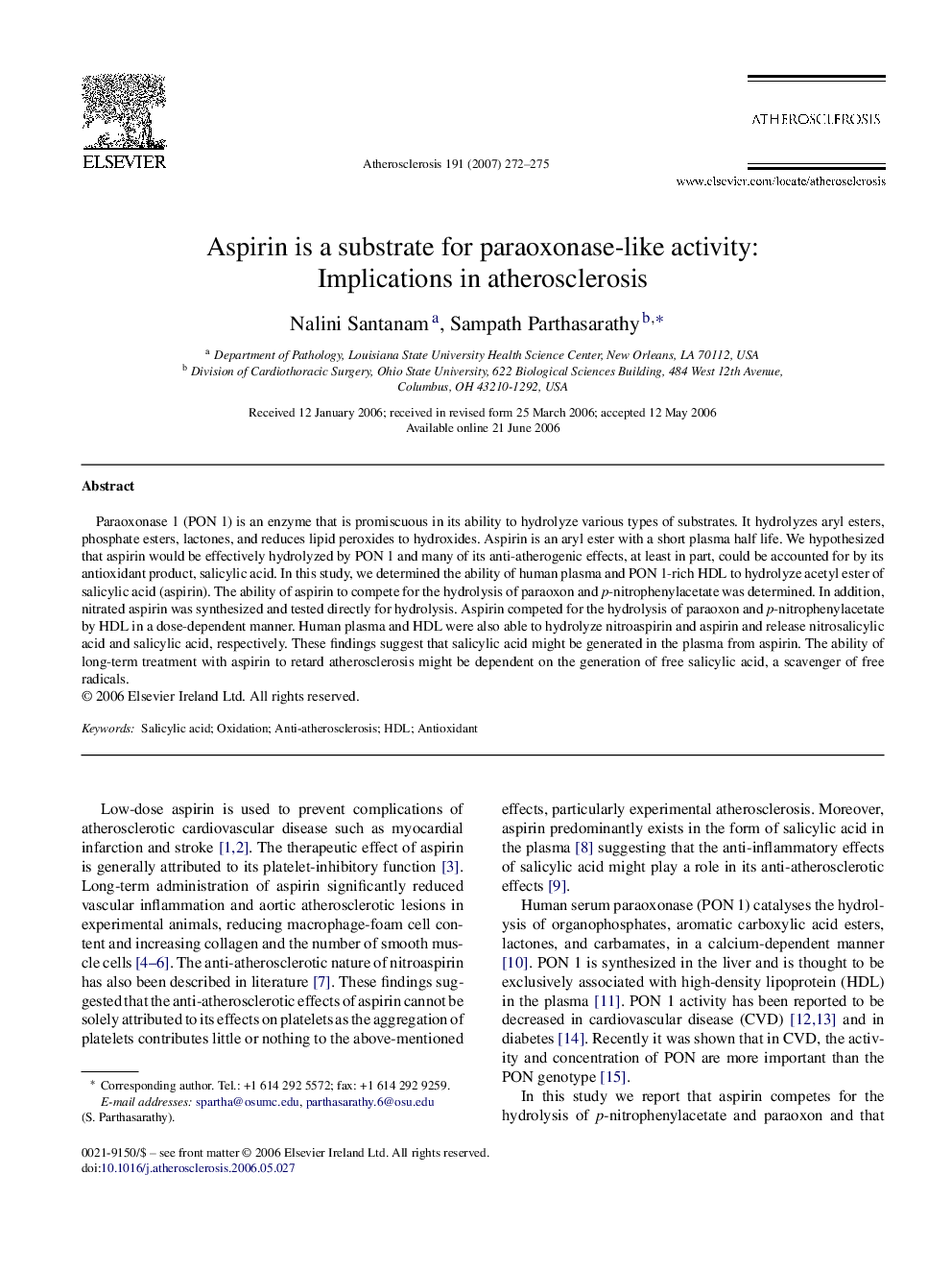| کد مقاله | کد نشریه | سال انتشار | مقاله انگلیسی | نسخه تمام متن |
|---|---|---|---|---|
| 2894876 | 1172444 | 2007 | 4 صفحه PDF | دانلود رایگان |

Paraoxonase 1 (PON 1) is an enzyme that is promiscuous in its ability to hydrolyze various types of substrates. It hydrolyzes aryl esters, phosphate esters, lactones, and reduces lipid peroxides to hydroxides. Aspirin is an aryl ester with a short plasma half life. We hypothesized that aspirin would be effectively hydrolyzed by PON 1 and many of its anti-atherogenic effects, at least in part, could be accounted for by its antioxidant product, salicylic acid. In this study, we determined the ability of human plasma and PON 1-rich HDL to hydrolyze acetyl ester of salicylic acid (aspirin). The ability of aspirin to compete for the hydrolysis of paraoxon and p-nitrophenylacetate was determined. In addition, nitrated aspirin was synthesized and tested directly for hydrolysis. Aspirin competed for the hydrolysis of paraoxon and p-nitrophenylacetate by HDL in a dose-dependent manner. Human plasma and HDL were also able to hydrolyze nitroaspirin and aspirin and release nitrosalicylic acid and salicylic acid, respectively. These findings suggest that salicylic acid might be generated in the plasma from aspirin. The ability of long-term treatment with aspirin to retard atherosclerosis might be dependent on the generation of free salicylic acid, a scavenger of free radicals.
Journal: Atherosclerosis - Volume 191, Issue 2, April 2007, Pages 272–275